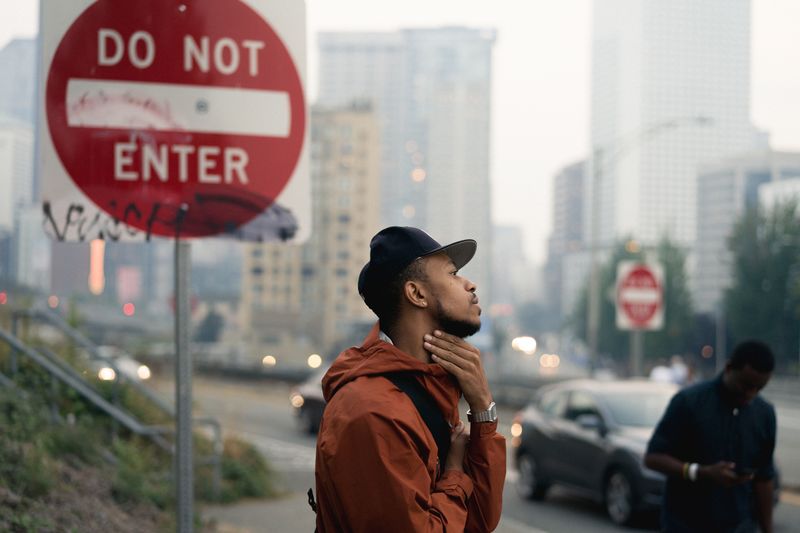Street Photographers for Beginners
Street Photographers for Beginners
Blog Article
3 Simple Techniques For Street Photographers
Table of ContentsA Biased View of Street PhotographersThe Ultimate Guide To Street PhotographersNot known Details About Street Photographers Not known Details About Street Photographers Street Photographers Fundamentals Explained
A style of digital photography that records everyday life in a public area. The actual publicness of the setting enables the digital photographer to take honest photos of complete strangers, frequently without their understanding. Street photographers do not always have a social objective in mind, however they prefer to separate and catch moments which might or else go unnoticed (Street Photographers).He was affected by several of those that influenced the street digital photographers of the 1950s and '60s, he was not chiefly interested in catching the spirit of the road. The impulse to aesthetically record people in public started with 19th-century painters such as Edgar Degas, douard Manet, and Henri de Toulouse-Lautrec, that worked side by side with photographers attempting to record the significance of city life.
Due to the fact that of the fairly primitive modern technology available to him and the lengthy exposure time needed, he struggled to capture the stress of the Paris roads. He tried out with a collection of photographic techniques, trying to find one that would enable him to record movement without a blur, and he located some success with the calotype, patented in 1841 by William Henry Fox Talbot. In comparison to Atget, digital photographer Charles Marville was worked with by the city of Paris to produce an encyclopaedic file of Haussmann's city planning project as it unravelled, hence old and brand-new Paris. While the professional photographers' topic was essentially the exact same, the results were noticeably various, demonstrating the influence of the digital photographer's intent on the character of the photos he produced.
Given the great quality of his photos and the breadth of material, engineers and musicians commonly acquired Atget's prints to use as reference for their very own work, though commercial passions were hardly his main motivation. Rather, he was driven to photograph every last remnant of the Paris he enjoyed. The mingled passion and seriousness of his mission shine through, causing photographs that narrate his own experience of the city, high qualities that prepared for road photography of the 20th century.
Street Photographers for Dummies
They expose the city via his eyes. His job and essential understanding of photography as an art form worked as ideas to generations of photographers that complied with. The next generation of street digital photographers, though they likely did not describe themselves because of this, was introduced by the photojournalism of Hungarian-born digital photographer Andr Kertsz.
Unlike his peers, Brassa utilized a larger-format Voigtlnder camera with a much longer exposure time, forcing him to be extra calculated and thoughtful in his technique than he might have been if using a Leica. (It is believed that he might not have had the ability to pay for a Leica at that time, however he did, however, utilize one in the late 1950s to take colour photos.) Brassa's pictures of the Paris underworld lit up by artificial light were a revelation, and the collection of the collection that he published, (1933 ), was a major success.
Cartier-Bresson was a champion of the Leica cam and among the first photographers to maximize its abilities. The Leica permitted the photographer to engage with the environments and to catch minutes as they took place. Its reasonably small dimension additionally aided the photographer fade right into the background, which was Cartier-Bresson's preferred method.
Street Photographers Fundamentals Explained
It is due to this fundamental understanding of the art of image Clicking Here taking that he is commonly attributed with finding the medium all over once more roughly a century because its innovation. He took photos for even more than a half century and influenced generations of professional photographers to trust their eye and intuition in the minute.
These are the concerns I shall try to respond to: And after that I'll leave you with my very own meaning of street photography. Yes, we do. Let's kick off with specifying what an interpretation is: According to (Street Photographers) it is: "The act of specifying, or of making something certain, distinct, or clear"
No, most definitely not. The term is both restricting and misdirecting. Seems like a road photography should be images of a roads best?! And all street digital photographers, other than for a handful of absolute newbies, will completely value that a street is not the vital element to street photography, and in fact if it's an image of a road with maybe a couple of monotonous individuals not doing anything of rate of interest, that's not street photography that's a picture of a road.
How Street Photographers can Save You Time, Stress, and Money.
He makes a valid factor do not you think? While I concur with him I'm not certain "honest public photography" will certainly capture on (although I do kind of like the term "honest digital photography") since "road digital photography" has actually been around for a lengthy time, with several masters' names attached to it, so I think the term is here to stay (Street Photographers).
You can fire at the beach, at a celebration, in a street, in a park, in a piazza, in a coffee shop, at a museum or art gallery, in a metro station, navigate to these guys at an occasion, on a bridge, under a bridge ...
Yes, I'm afraid we have no choice! Without policies we can not have a meaning, and without a meaning we do not have a genre, and without a genre Get the facts we don't have anything to define what we do, and so we are stuck in a "rules definition genre" loophole!
Our Street Photographers Ideas

Report this page